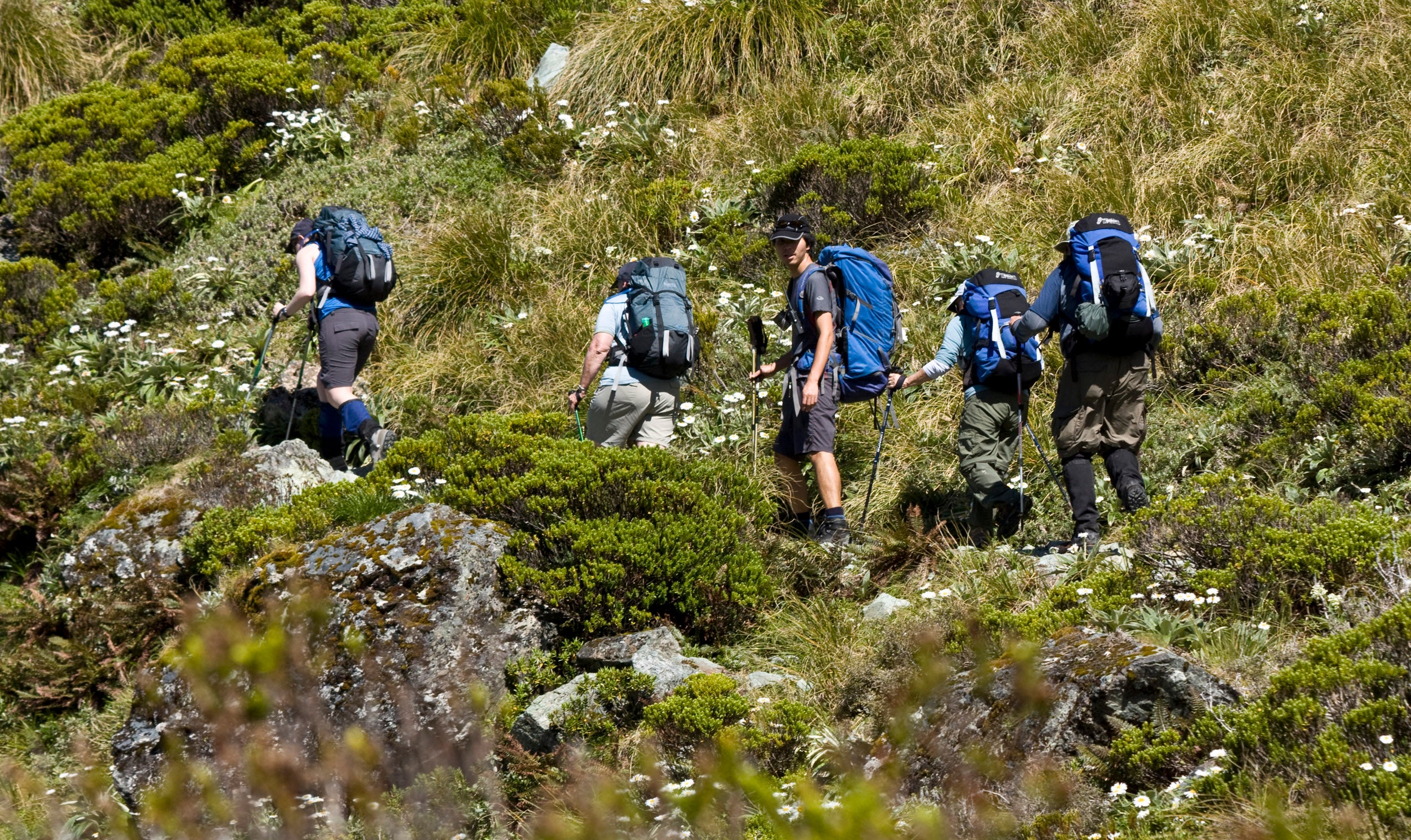In Praise of the "F You" Stop

'PermaCultured'
Here’s how a slinky stop works. You lag behind the crew, all heavy legs
and labored breaths. Then—sweet relief!—your hiking partners halt to nosh trail mix and gulp water. But as you catch up, the uber-fit alpha at the front announces, “Let’s keep moving!” So-called friends fall into lockstep. Your oxygen-starved muscles revolt, and the gap widens once again. (Understandably, it’s also known as the “F you break.”)
The takeaway message is that you’re slow. And no, we won’t change the pace, even if that destroys the experience and your ego.
I’ve been the backpacker, mountain biker, and skier nearly left behind. It’s no fun. And when a large group subjects a solitary laggard to repeated slinky stops, we can all agree that’s just selfish, a borderline bully tactic. But should we mothball this social practice? Should we stuff it into the hiker’s archive between cotton pup tents and Styrofoam cups? No way. In fact, the slinky stop is essential backpacker tradecraft. I know because I’ve been on both sides of the F you.
Consider this scenario. I lead a friend down the Crawford Path as the route drops 2,350 vertical feet in 3.1 miles, the last section in our 18-mile, 12-hour effort on New Hampshire’s Presidential Traverse. When my trail partner complains of sore legs from the crunching descent, I hit the gas. As a gap opens behind me, I pause, teetering on a boulder as she catches up, then leap into motion before she halts. It’s a deliberate fake out. I don’t turn around. No eye contact.
This version of the slinky stop plays as clueless, not vicious. I know my friend won’t be any less sore or tired, even with a break, so my job is to coax her forward. Keep up! Soon, as I intended, her pace matches mine, and we ignore shrieking joints as we rock-hop downhill to the cold pizza waiting at the car.
Need to outrun weather? Beat sundown? Distract complainers? Let the slowpokes catch you for a momentary morale boost—a confirmation that you’re not leaving them behind—then keep moving. Done right, these fake breaks feed momentum, not resentment. And that means when bad weather rolls in, pea-size hail stones hit your tent fly, not your face. With the judicious use of slinky pauses, dusk will find you stumbling into the pub instead of tripping along a creekbed.
Plus, there are certain scenarios that all but cry out for an F you break. Some can even be fun. My younger brother towers over me at 6 feet, 4 inches tall, with biceps like Bruce Banner mid-hissy fit. My ability to beat him up steep peaks—and taunt him with slinky stops—offers me a rare edge in our sibling rivalry.
Need a conflict resolution tool for quarreling significant others? Look no further. Repeated slinky stops won’t solve the problem, exactly, but at least they’ll delay the bickering until camp. (Ever tried to argue during anaerobic exercise? Not possible.) Bolt ahead, enjoy the scenery, brake, let your partner catch up, repeat. No face time, no conflict. Besides, now you’re on track to get to camp early, so you’ll have plenty of time to work it out. (Warning: This technique may backfire.)
Of course, I’m not advocating overuse of the slinky stop. But you’ll have to catch me if you want to argue about it.